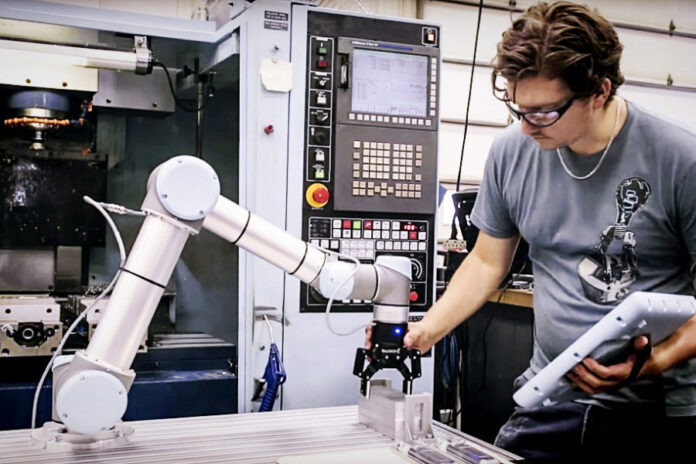Envision a scenario where countless miniature robots work in harmony, much like a colony of ants or a school of fish. This is the core idea behind collective robotics—an innovative approach inspired by nature’s swarms to build robotic systems that are efficient, scalable, and adaptable. Unlike traditional robots that operate individually, collective robotics emphasizes the coordinated actions of multiple units that interact and cooperate without a central leader.
As technological progress continues, these systems are finding uses across a wide range of industries—from emergency response and agriculture to outer space exploration. In this article, we explore the fundamentals of collective robotics, its operational principles, real-world applications, advantages, challenges, and what the future may hold.
Understanding Collective Robotics
The foundation of collective robotics rests on a few simple concepts: decentralization, local interaction, autonomy, and scalability. Each robot in the group follows a set of straightforward rules, and through their interactions, they produce complex, emergent behaviors. These interactions draw inspiration from natural phenomena observed in ants, bees, and birds.
Key elements include:
- Decentralized Operation: Every robot works independently, with no central command.
- Self-Organization: The system adapts dynamically to changes in its surroundings.
- Communication: Robots share information via wireless signals, infrared, or visual cues.
- Scalability: The collective functions effectively regardless of whether it comprises tens, hundreds, or thousands of robots.
- Resilience: The system maintains performance even if some robots fail.
Together, these robots can complete tasks that would be unmanageable for a single machine.
Real-World Applications
Collective robotics holds the potential to revolutionize various sectors. Notable applications include:
- Emergency Response and Search & Rescue: In disaster scenarios, groups of robots can be sent into hazardous environments to locate survivors, map unsafe areas, and deliver supplies—without putting human lives at risk.
- Modern Agriculture: Farmers are leveraging these technologies to optimize crop production. Collective robots can monitor soil health, plant seeds, apply fertilizers, and remove weeds with pinpoint accuracy.
- Medical and Healthcare Innovations: Tiny robots, or nanobots, are being developed for uses like targeted drug delivery, minimally invasive surgery, and even early cancer detection.
- Warehouse and Supply Chain Efficiency: Major companies employ small autonomous robots to sort, move, and organize inventory, streamlining operations and reducing costs.
- Space Exploration: Space agencies like NASA are investigating how groups of robots can explore planets, map surfaces, and repair spacecraft, especially in environments too harsh for humans.
- Traffic Management and Autonomous Vehicles: In the realm of self-driving technology, groups of vehicles and drones can communicate to prevent traffic jams, avoid collisions, and find optimal routes.
- Environmental Monitoring: These robotic swarms can track pollution, climate change indicators, and deforestation, gathering crucial data over extensive areas.
Advantages of Collective Robotics
Collective robotics offers several significant benefits compared to conventional single-unit systems:
- Scalability: The system works efficiently regardless of the number of robots deployed.
- Resilience: The overall operation continues smoothly even if individual robots malfunction.
- Cost Efficiency: Many small, simple robots can be less expensive than one large, complex machine.
- Adaptability: The robots can quickly respond to changes and unexpected events in their environment.
- Efficiency: Sharing tasks among many units often results in quicker and more effective outcomes.
Challenges Ahead
Despite its promise, collective robotics also faces some hurdles:
- Coordination Complexity: Achieving smooth communication and cooperation among numerous robots is challenging.
- Power Limitations: Small robots usually have limited battery life, necessitating more efficient power solutions.
- Security Concerns: The potential for cyber threats poses a risk to coordinated operations.
- Ethical Considerations: As robots gain more autonomy, issues like privacy and safety become increasingly important.
- Technological Barriers: Current hardware and software may struggle to produce highly efficient and economically viable systems on a large scale.
The Road Forward
The future of collective robotics appears bright, with several emerging trends likely to shape the field:
- Integration with AI: Artificial intelligence will boost the robots’ capacity for learning, adaptation, and self-improvement.
- Advances in Communication: Developments in 5G and edge computing will support real-time collaboration among robots.
- Enhanced Bio-Inspired Designs: Future systems may better mimic complex natural systems, such as neural networks and intricate insect behaviors.
- Quantum Computing Prospects: Faster decision-making processes enabled by quantum computing could further refine swarm coordination.
- Broader Industrial Adoption: More sectors—from logistics to healthcare—will likely incorporate collective robotics to streamline their operations.
Conclusion
Collective robotics is redefining the future of automation by leveraging the power of group intelligence. These systems not only solve complex problems and enhance efficiency, but they also perform tasks that surpass human capability. Whether it’s in disaster management, precision farming, space exploration, or traffic control, the applications are extensive. As technology continues to evolve, we can expect even more sophisticated and capable robotic swarms that will transform industries and improve our everyday lives. The future indeed brims with endless possibilities.




